Your Books Aren’t the Problem. Your Shelves Are. Here’s How to Fix It.
So many of my projects start with the same conversation. A client will usher me into their apartment or home, gesturing apologetically at stacks of books. They love their collection, but they’re drowning in it. They think they have to choose between the books they cherish and a living space that feels open and sane. My job is to show them that’s a false choice.
In this article
For years, I’ve been building custom cabinetry and shelving in homes where every square inch counts. And I’ve learned that successfully storing books in a small space isn’t about some secret, magic-bullet solution. It’s about getting a handle on a few core truths: the surprising weight of books, what paper needs to survive, and how to spot wasted space hiding in plain sight.
It’s a little bit of physics, a dash of preservation science, and a lot of practical know-how. I’ve seen what works, what fails spectacularly, and what can cause serious damage to both books and buildings. This is the stuff the pros know, broken down so you can house your collection safely and beautifully, no matter how small your room is.

First Things First: You Have to Respect the Weight
Before you even think about buying a shelf, you have to get your head around the sheer weight of books. They are so much heavier than they look. A single foot of paperbacks? That’s about 20 pounds. For hardcovers, especially big art books or textbooks, you can easily double or triple that to 40, maybe even 50 pounds per foot.
I had a client who wanted a single ten-foot-long shelf across their living room wall. When I did the math, we were planning for over 1,500 pounds of weight. To put that in perspective, I told them it was like having eight grown men standing on that one shelf, forever. That visual really clicked. Suddenly, a conversation about screws and materials didn’t seem so boring anymore.
How to Anchor Your Shelves Without Wrecking Your Walls
That incredible weight is trying to do two things to your shelf fastenings: rip them straight out of the wall (tension) and slice them clean off (shear force). A standard drywall anchor you’d use for a picture frame isn’t designed for that kind of punishment. It’s just not. This is why the most common disaster I see is shelving that has pulled right out of the drywall, leaving gaping holes and a heartbreaking pile of damaged books on the floor.

So, here’s the most important rule: you must anchor shelves to wall studs. Studs are the vertical wood beams that form the skeleton of your house, usually spaced 16 inches apart. A quality electronic stud finder is your best friend here—don’t just knock on the wall and hope for the best. Good to know: Spend the $25 to $50 for a model with a deep-scan mode to find the exact center of the stud. You can grab one at any big-box hardware store.
And what do you use to attach the shelf? Here’s a pro tip: use wood screws that are at least 2.5 inches long. This ensures the screw goes through the shelf bracket, through the half-inch drywall, and gets a solid 1.5-inch bite into the wooden stud behind it. That’s how you build something that lasts.
Principle Two: Keep Your Books Happy and Healthy
Proper storage is more than just getting books off the floor. Paper is an organic material, and its two biggest enemies are sunlight and humidity. Your goal is to create a stable environment to slow down its natural decay.
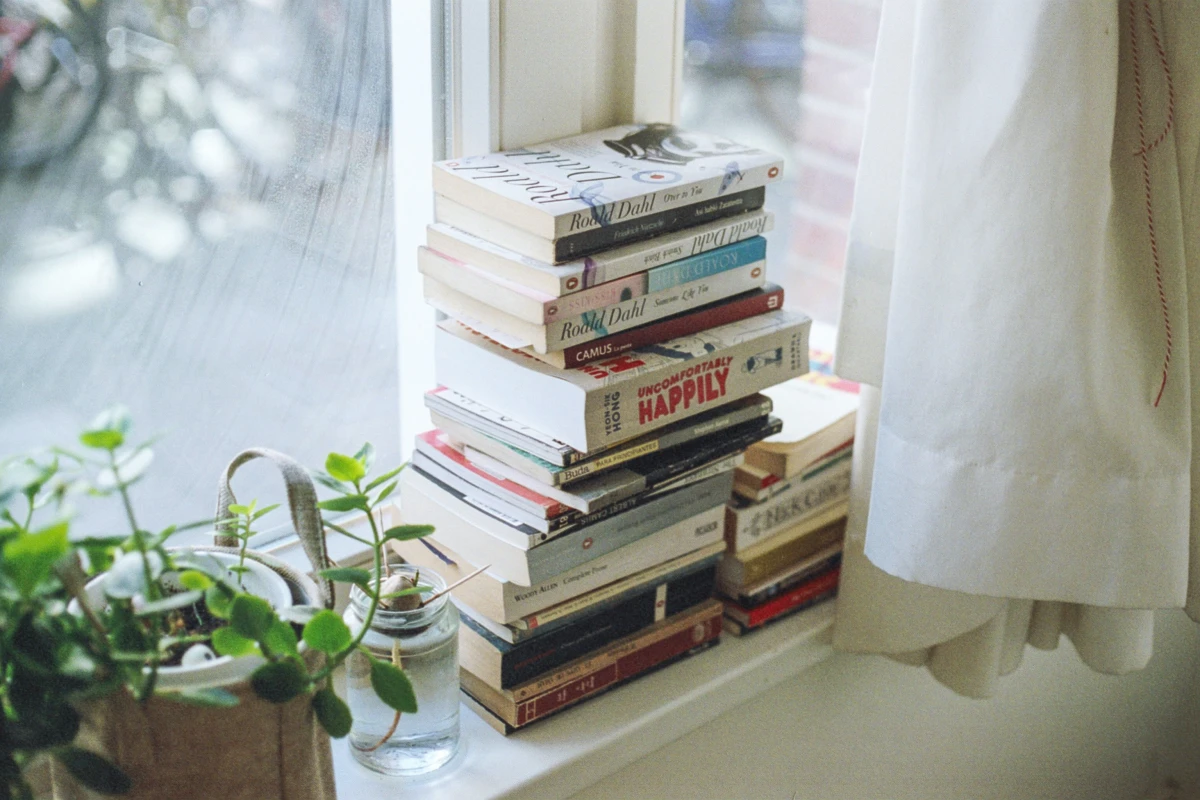
The Silent Damage of Sunlight and Humidity
Direct sunlight will absolutely cook your books. We’ve all seen it—the yellowed, brittle pages of an old book or newspaper. That’s UV radiation breaking down the paper, making it acidic and fragile. It also fades the spines and weakens the cover fabric. The best bet is to place your main collection on a wall that doesn’t get hit with direct sun. If that’s impossible, look into UV-filtering film for your windows. A DIY kit can cost as little as $50, and it blocks almost all of the harmful rays. It’s a no-brainer for protecting not just books, but wood furniture and art, too.
Humidity is a sneakier problem. Too high (over 60%), and you’re inviting mold and mildew. Too low (below 30%), and the paper and bindings can become brittle and crack. Honestly, this is why basements and attics are book graveyards. I once helped a family salvage what was left of a collection from a damp basement. We had to throw out a third of their books due to black mold—a genuine health hazard. You can monitor your room’s conditions with a simple digital hygrometer, which you can find online for about $10. If you see consistently high numbers, a small dehumidifier is a worthy investment to protect your collection.
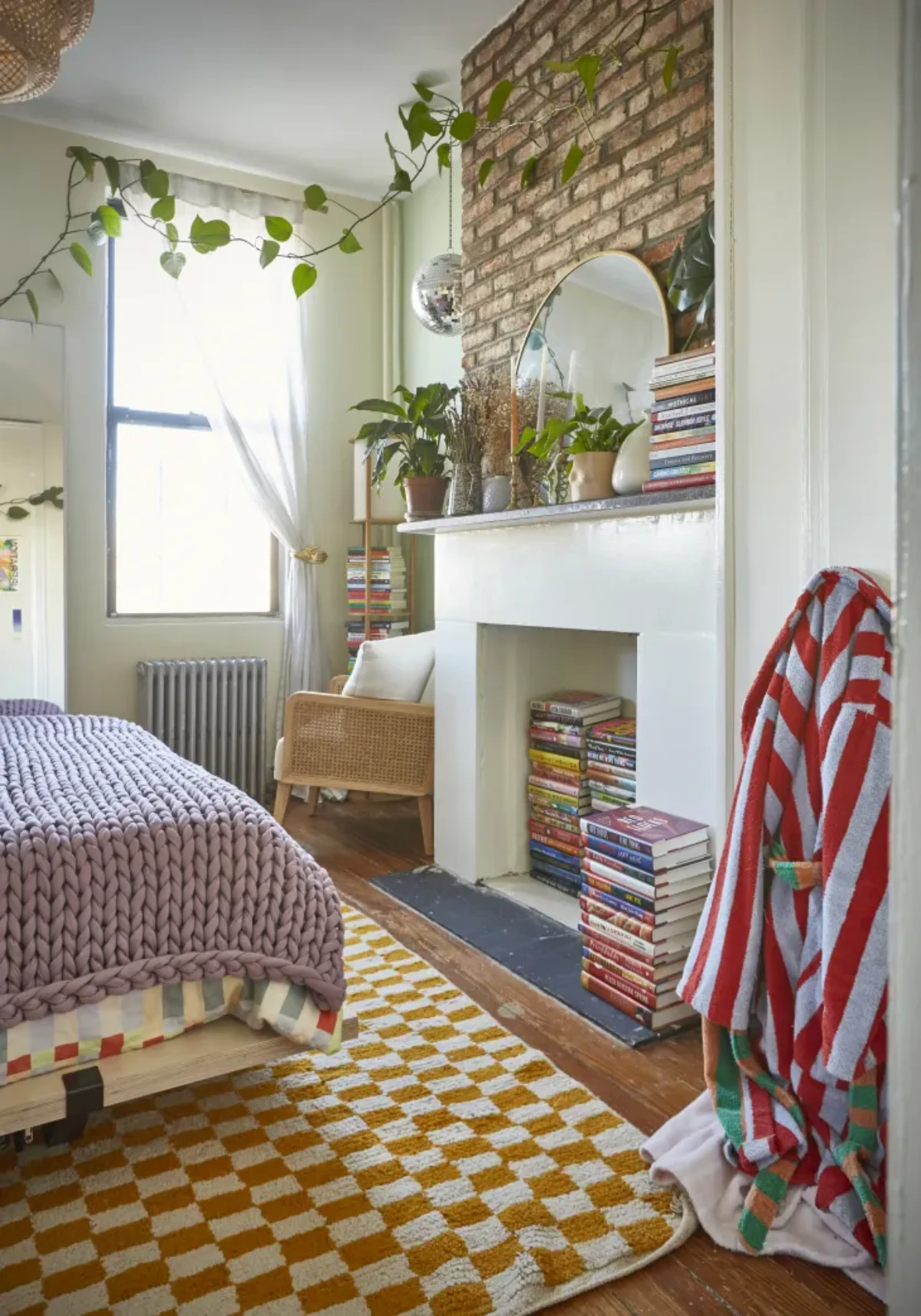
Smart Ways to Steal Space (The Pro-Approved Methods)
Okay, with the boring (but critical) science out of the way, let’s get to the fun part. Here are some of the go-to techniques I use to squeeze a library into a tight spot.
1. The Non-Working Fireplace Nook
An old, non-functional fireplace can be a gorgeous, recessed home for books. But heads up! You can’t just stack them in there. The biggest risk isn’t fire; it’s moisture and soot from the chimney. Rain can get in an uncapped chimney, and drafts can pull damp, sooty air down, staining your books.
Here’s the right way to do it:
- Get it Inspected and Capped. Before anything, have a certified chimney sweep inspect and clean the flue, then cap it at the top. This is a non-negotiable safety step and might cost anywhere from $500 to over $1,500, but it prevents a world of hurt.
- Seal the Damper. Make sure the metal flap inside (the damper) is sealed shut. A custom-cut piece of rigid foam insulation works great to stop drafts.
- Build a Proper Insert. Don’t just stack books on the brick. I build a simple, open-front box out of 3/4-inch cabinet-grade plywood that slides right in. This creates flat, stable shelves and lifts the books off the potentially damp masonry. Oh yeah, and give the box a couple of coats of polyurethane to seal it from any residual dampness.
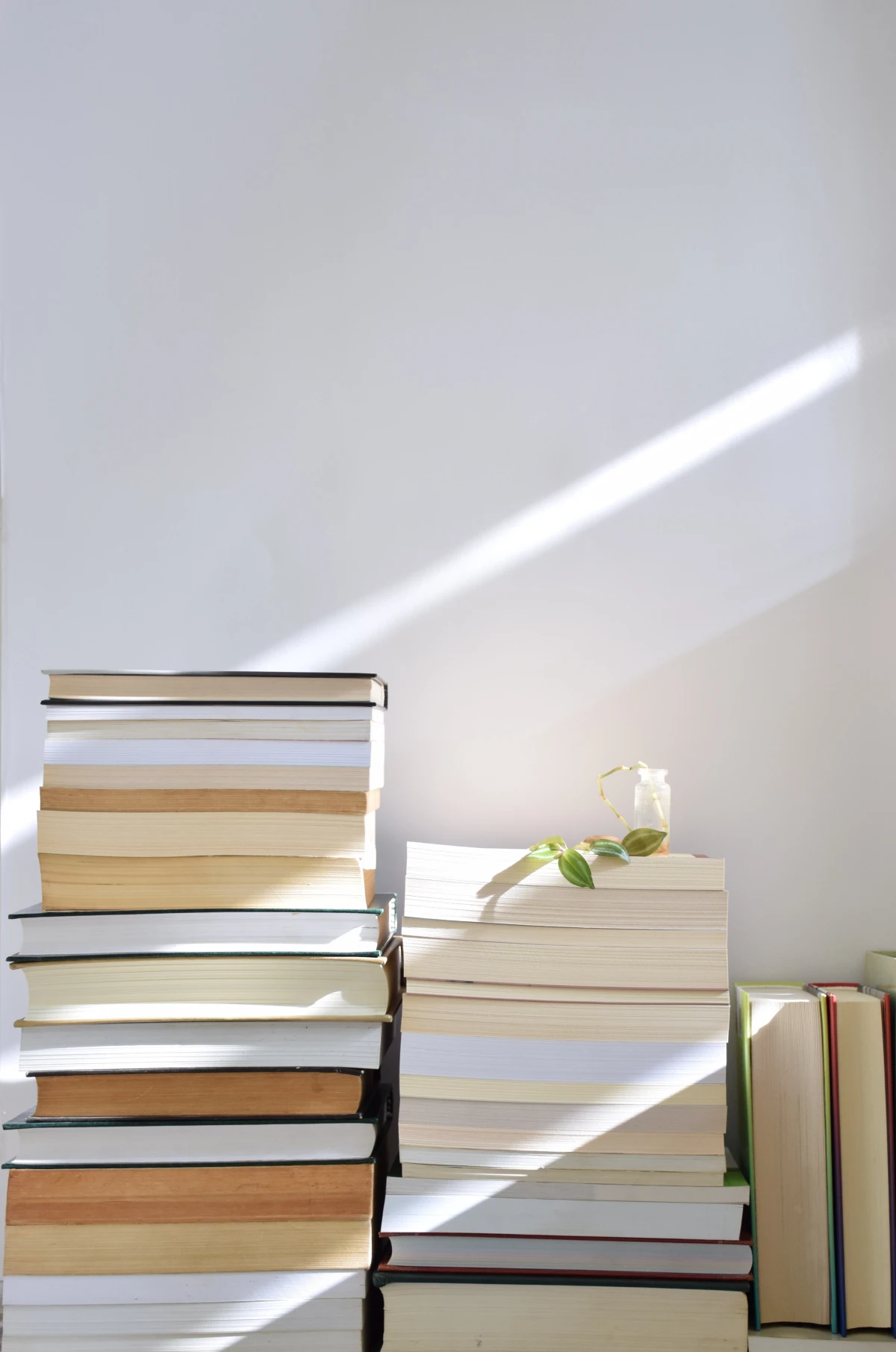
2. Intentional Stacks, Not Messy Piles
There’s a fine line between a messy pile of books on the floor and an intentional, stylish column. The difference is all in the execution.
Think of it as Jenga, but with books you actually care about. Start with your largest, heaviest hardcovers on the bottom to create a stable base. As you stack, keep an eye on the column to make sure it’s straight and not leaning. For safety, I never recommend stacking any higher than your waist, especially if you have kids or pets. This method is best for sturdy paperbacks and modern hardcovers, as it does put pressure on the spines of the books at the very bottom.
3. The Hidden Space Under the Furniture
The space under your bed or a console table is usually just a gathering ground for dust bunnies. Let’s make it useful. The key is to never store books directly on the floor where they’re vulnerable to spills and dust. I build shallow trays, often out of thin plywood, and put small caster wheels or felt sliders on the bottom. These can be rolled out for easy access and keep the books contained and clean.
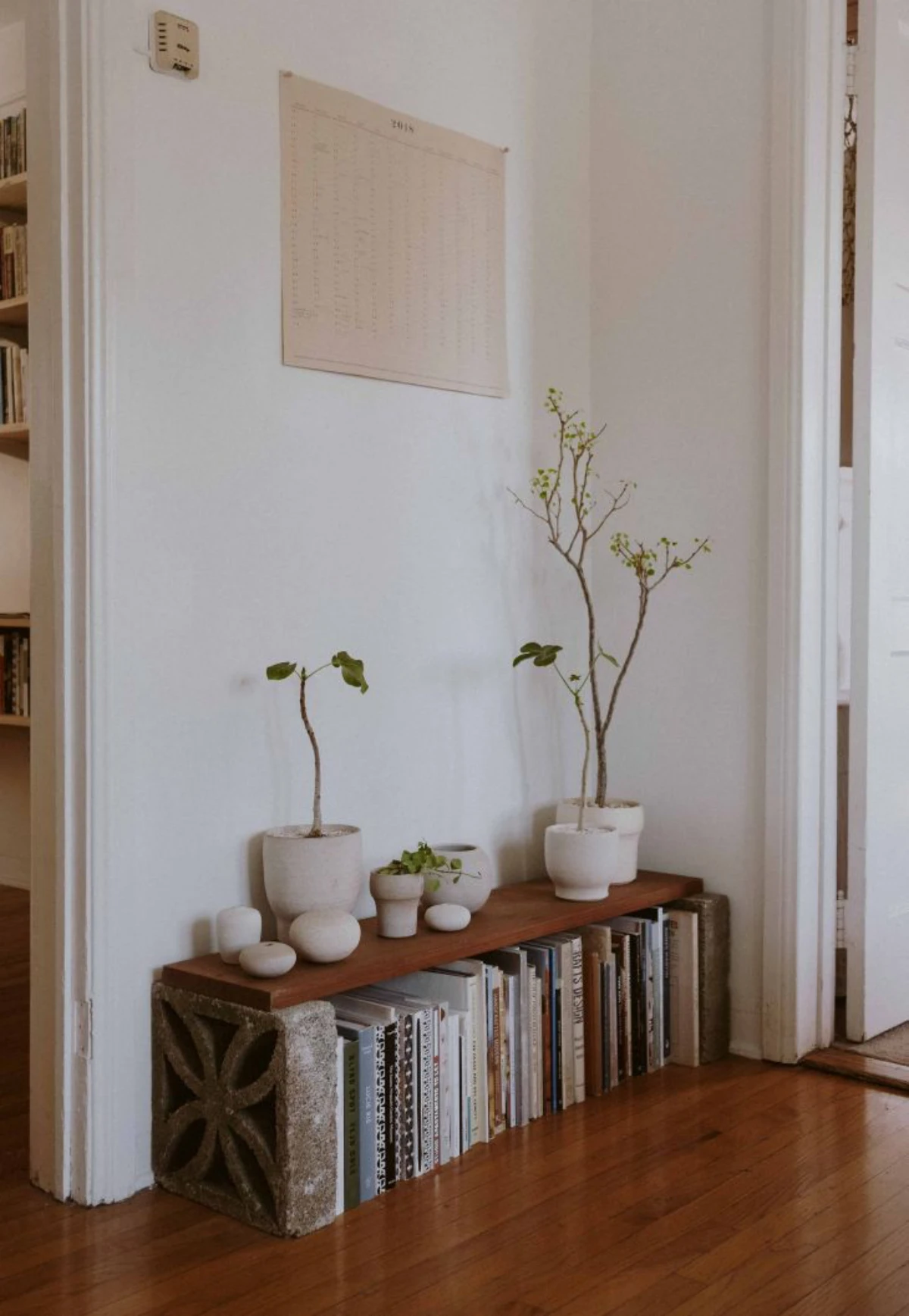
Just be sure to measure your clearance first, and whatever you do, avoid the space in front of or under a radiator or heating vent. The constant hot, dry air will turn your book pages into potato chips.
4. Taming the Leaning Bookcase
Leaning or ‘ladder’ bookcases look great in small spaces because they feel airy. But from a structural standpoint? They can be incredibly dangerous. Their center of gravity is high and shallow, making them easy to tip.
Your 5-Minute Safety Check: Go to your tallest bookcase right now and give it a gentle but firm push. Does it wobble? If so, order an anti-tip kit online tonight. A $15 furniture strap is the cheapest, easiest insurance you can buy to prevent a disaster.
I was once called to a home where a toddler had tried to climb a leaning bookcase. The simple wall anchor that was installed saved that child from serious injury. It’s that important. Always, always anchor these units to a wall stud.
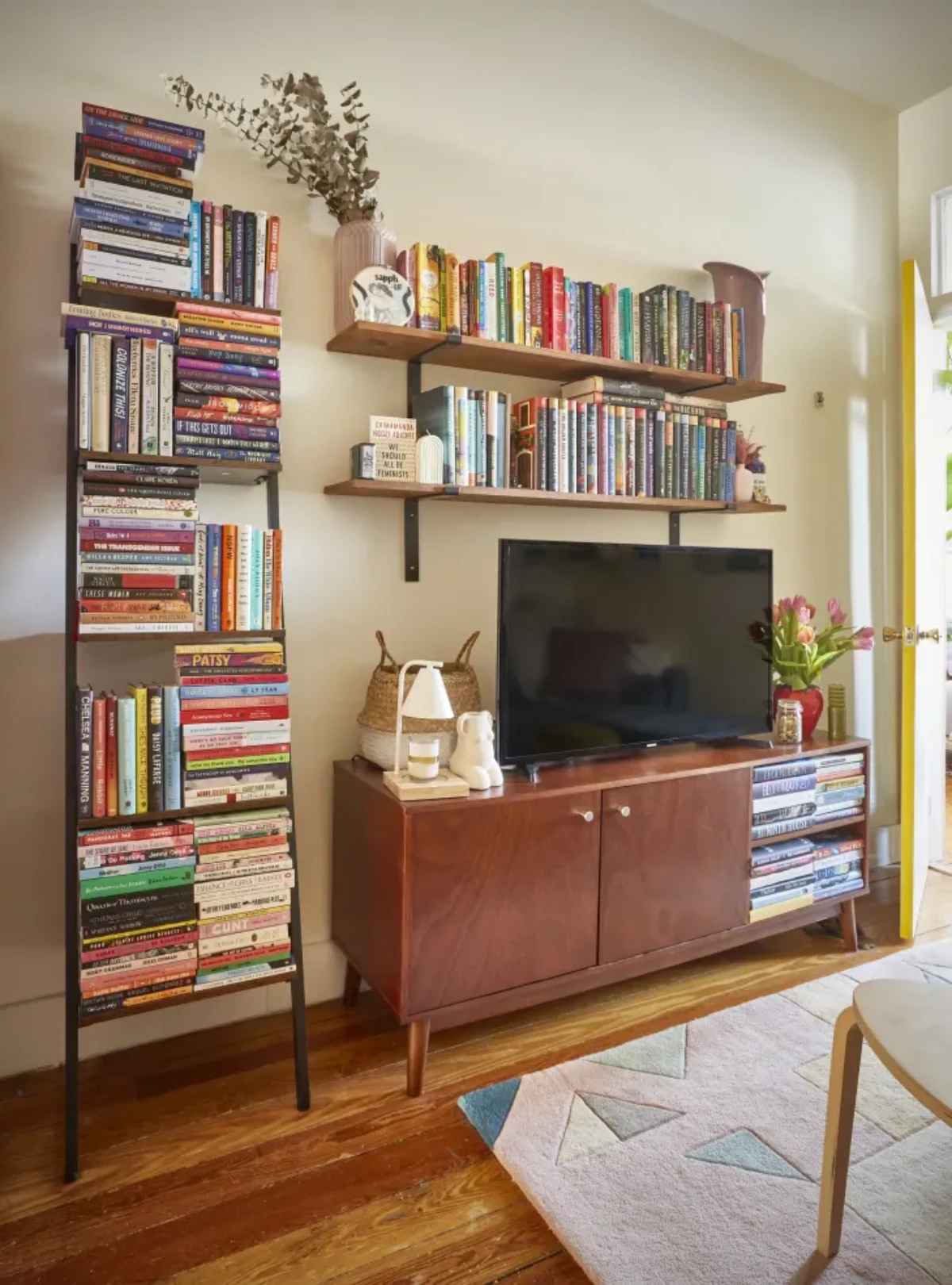
Shopping List for This Project:
- A quality stud finder ($25-$50)
- A drill
- Two L-brackets or a furniture anti-tip kit (around $15 at any hardware store)
- 2.5-inch wood screws
5. Going Vertical: The Ultimate Space Saver
The most efficient way to store a ton of books is to go up. That means using the full height of your walls. A single, well-installed shelf running above a doorway can hold 20-30 books, getting them completely out of your immediate living space.
But you need to be smart about shelf sag. Here’s a quick mental cheat sheet I use for how far a shelf can go between supports (the ‘span’) before it starts to bow:
- For budget-friendly Particleboard/MDF (¾-inch thick): Don’t push it past 30 inches for a full load of books. This stuff is cheap, but it sags.
- For mid-range Plywood (¾-inch thick): You can safely span up to 36 inches. This is my go-to for most projects.
- For solid Wood like Pine (1-inch thick): You can get away with about 42 inches. It costs more but offers great strength.
By the way, those trendy ‘floating shelves’ with no visible brackets are usually for display, not for a library. Most off-the-shelf versions just can’t handle the weight. The only safe way to get that look for heavy books involves heavy-duty steel brackets that are bolted to studs before the drywall goes up.
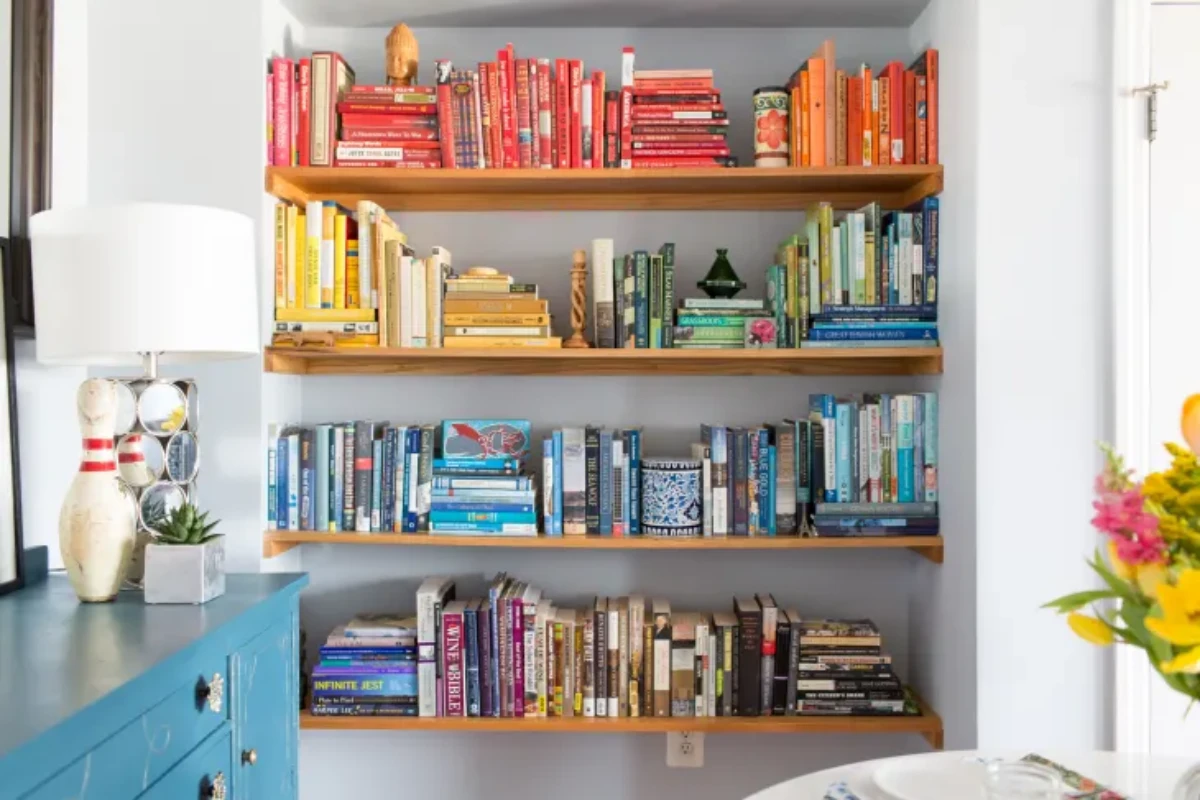
When to Swallow Your Pride and Call a Pro
Look, you can do a lot of this yourself. But there are times when calling a professional carpenter is the smart move. Give someone a call if you’re installing a massive system, you’re not sure if a wall is load-bearing, or you just aren’t comfortable with the tools. Trust me, paying a pro for a few hours of work is a lot cheaper than repairing a collapsed wall. Your books are part of your story—storing them well ensures they remain a source of joy, not stress.
Inspiration:

Plywood: When it comes to the shelf board itself, this is the professional’s choice for serious book collections. Its strength comes from laminated wood veneers with alternating grain directions, making it exceptionally resistant to sagging. High-quality Baltic Birch plywood, for instance, holds screws tenaciously and can handle significant weight, making it ideal for longer spans without bowing.
MDF (Medium-Density Fiberboard): Valued for its flawlessly smooth surface and lower cost, MDF is a popular choice for budget-friendly projects. However, it’s essentially pressed wood dust and glue, making it far more susceptible to bending under the constant load of books. It also doesn’t hold screws as securely as plywood, especially if they need to be re-driven.
For a library built to last, investing in plywood is the best way to prevent the dreaded shelf-sag that plagues lesser materials.










